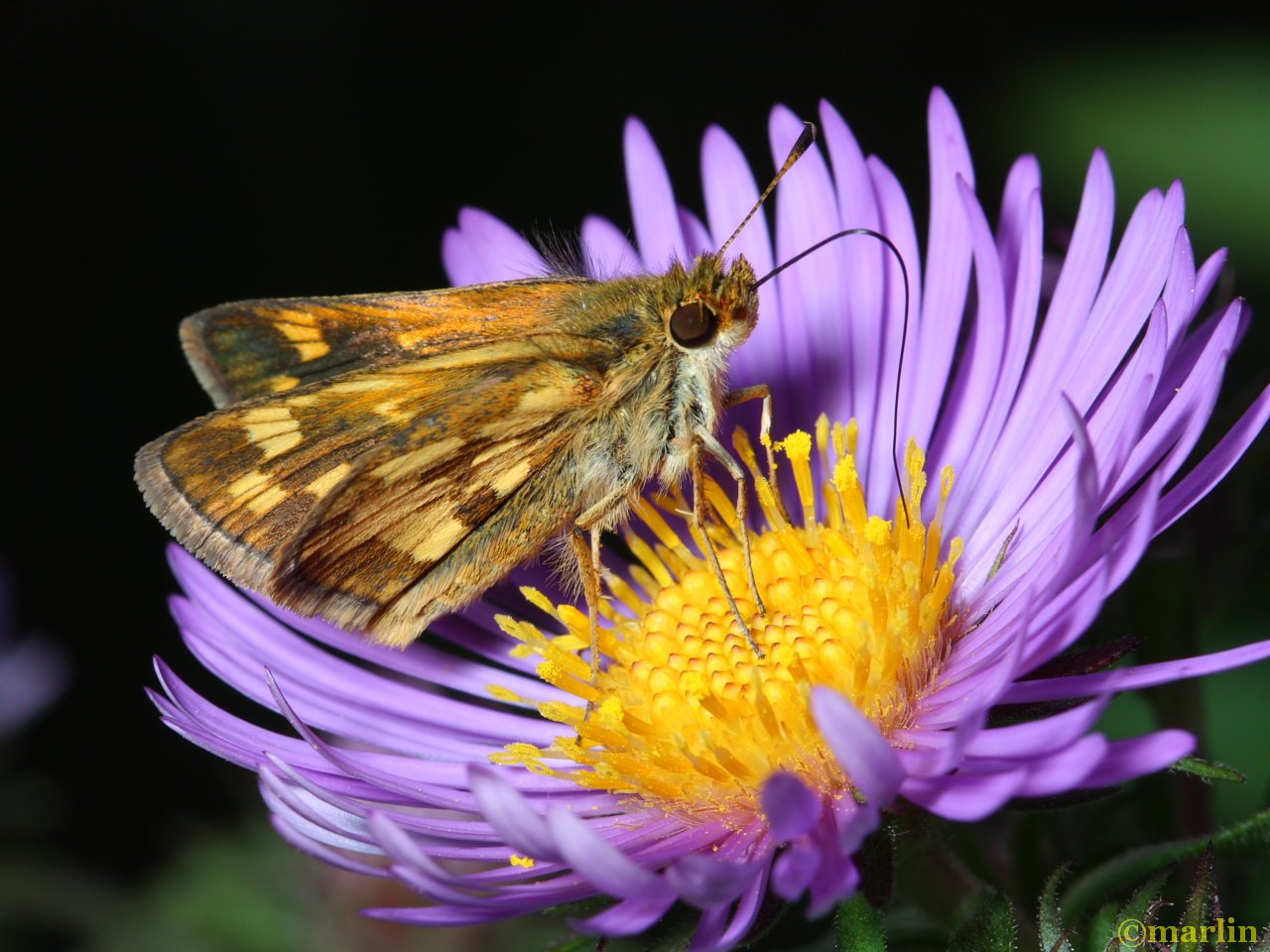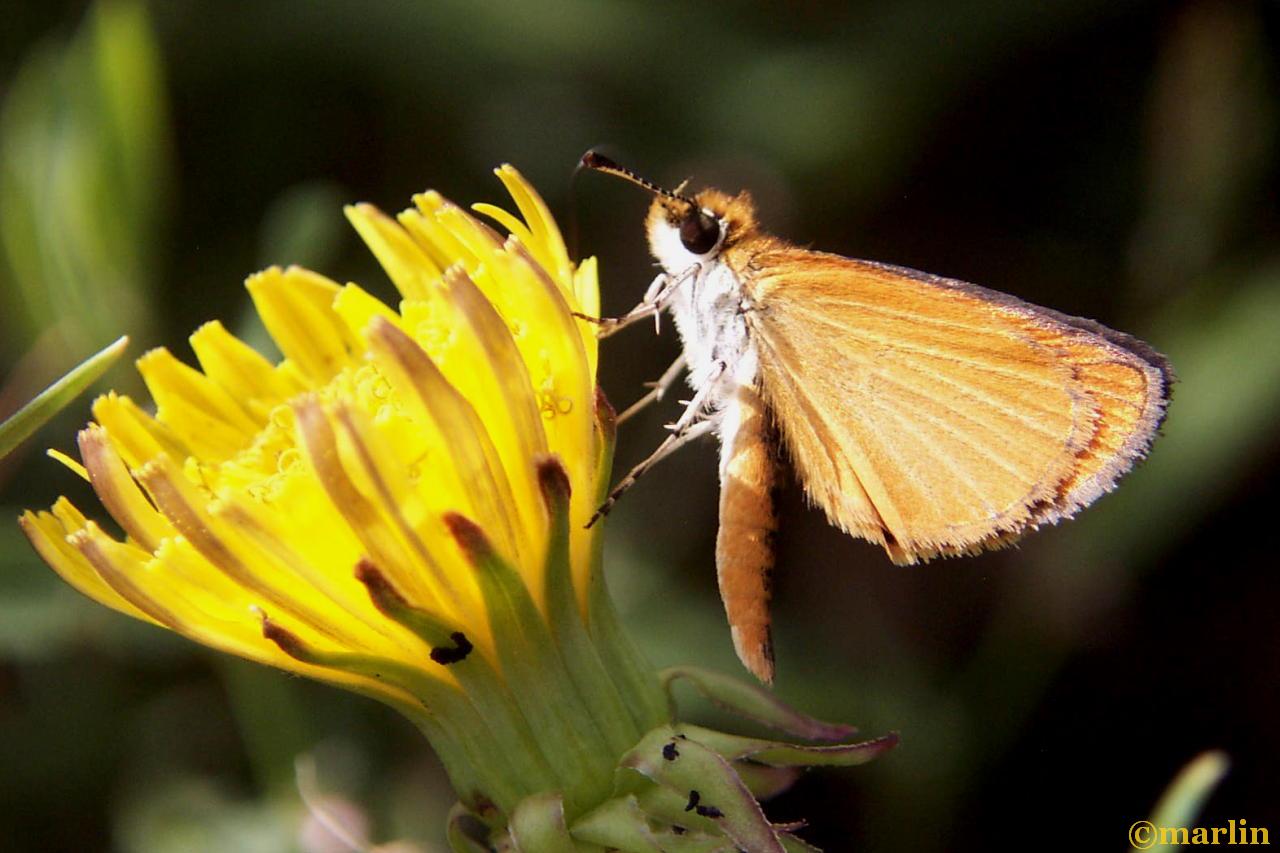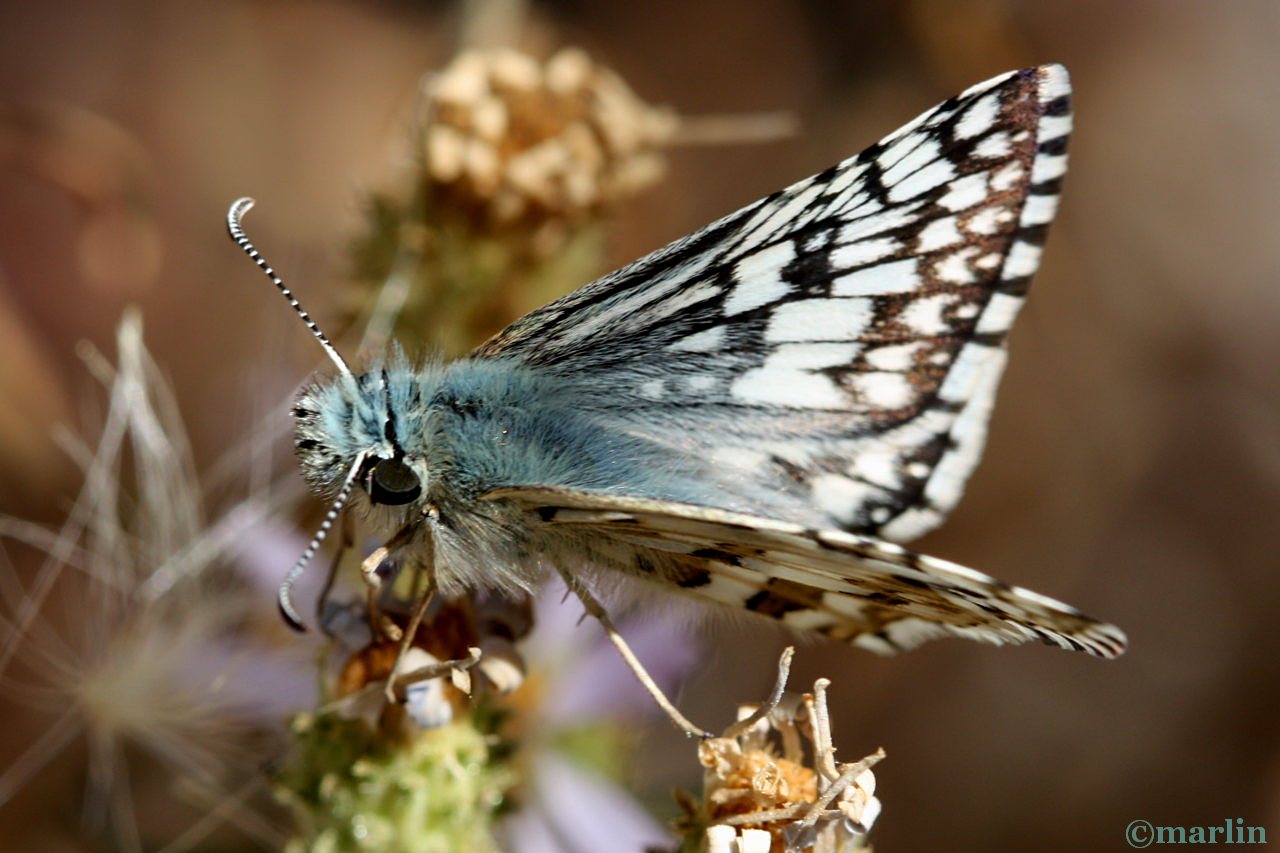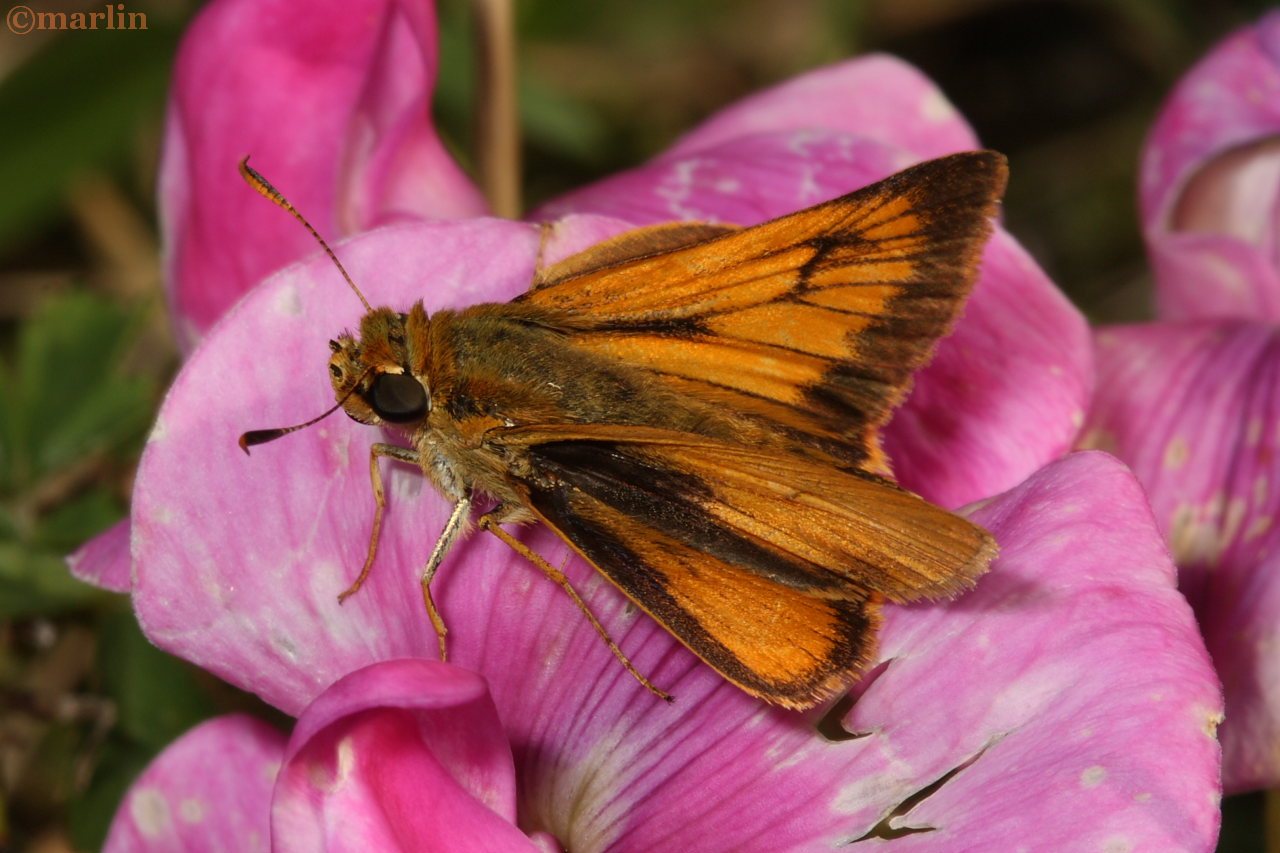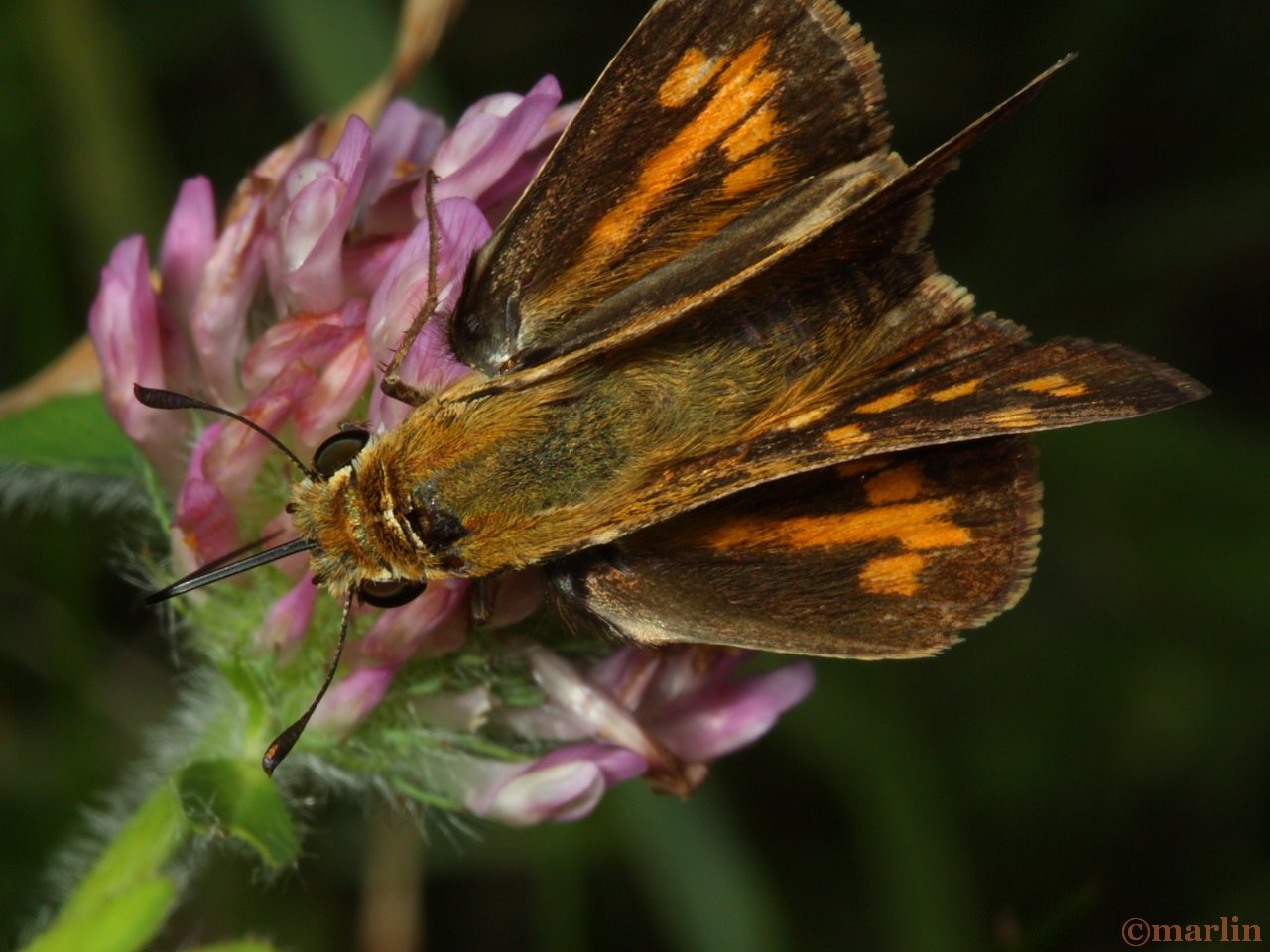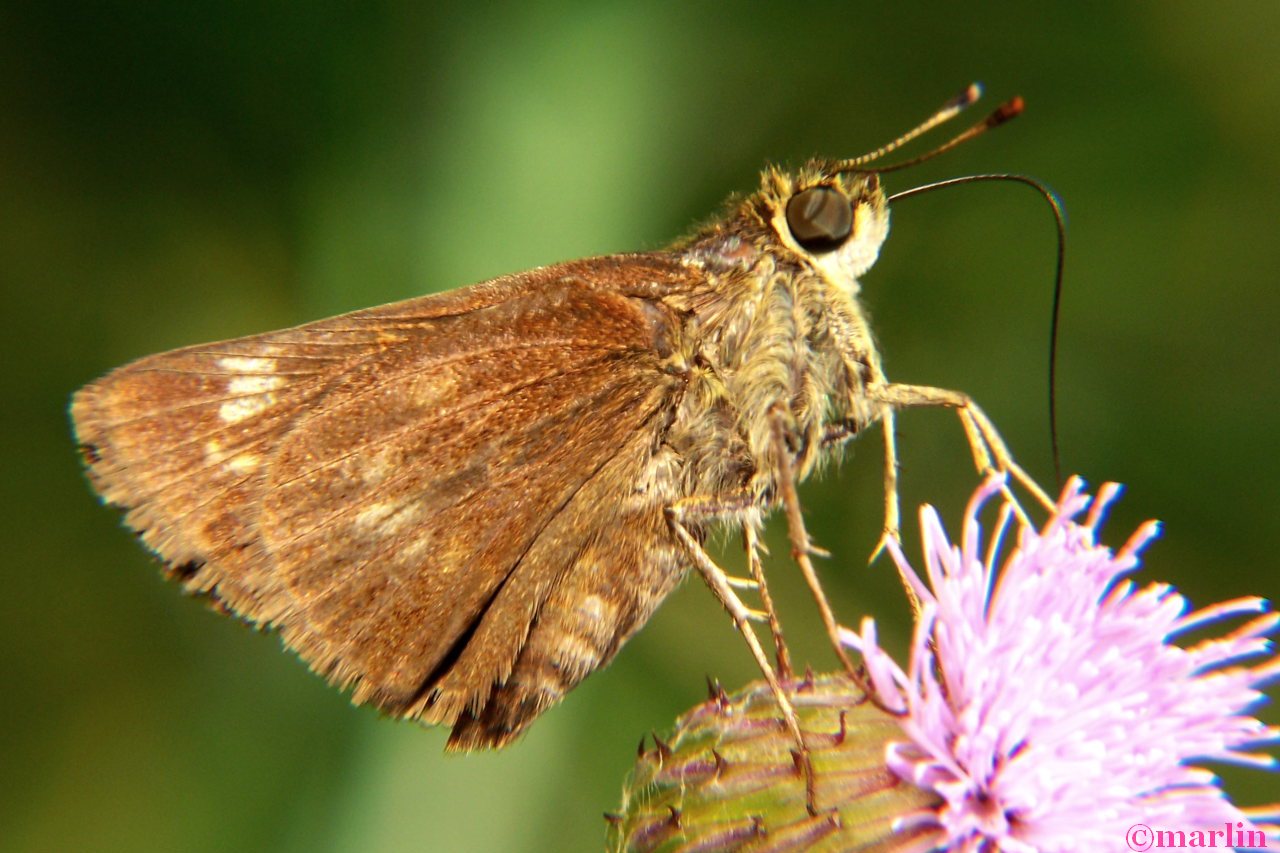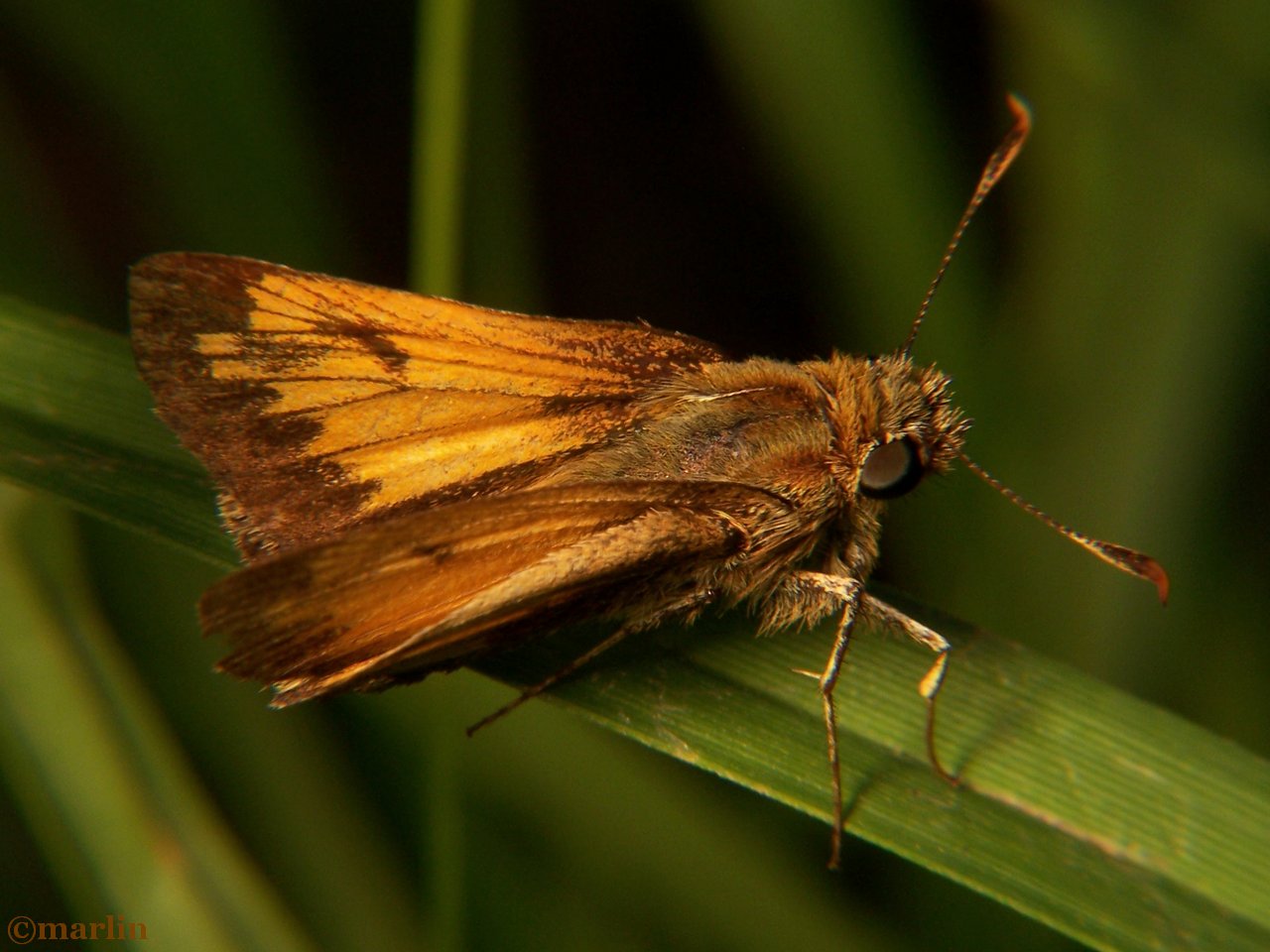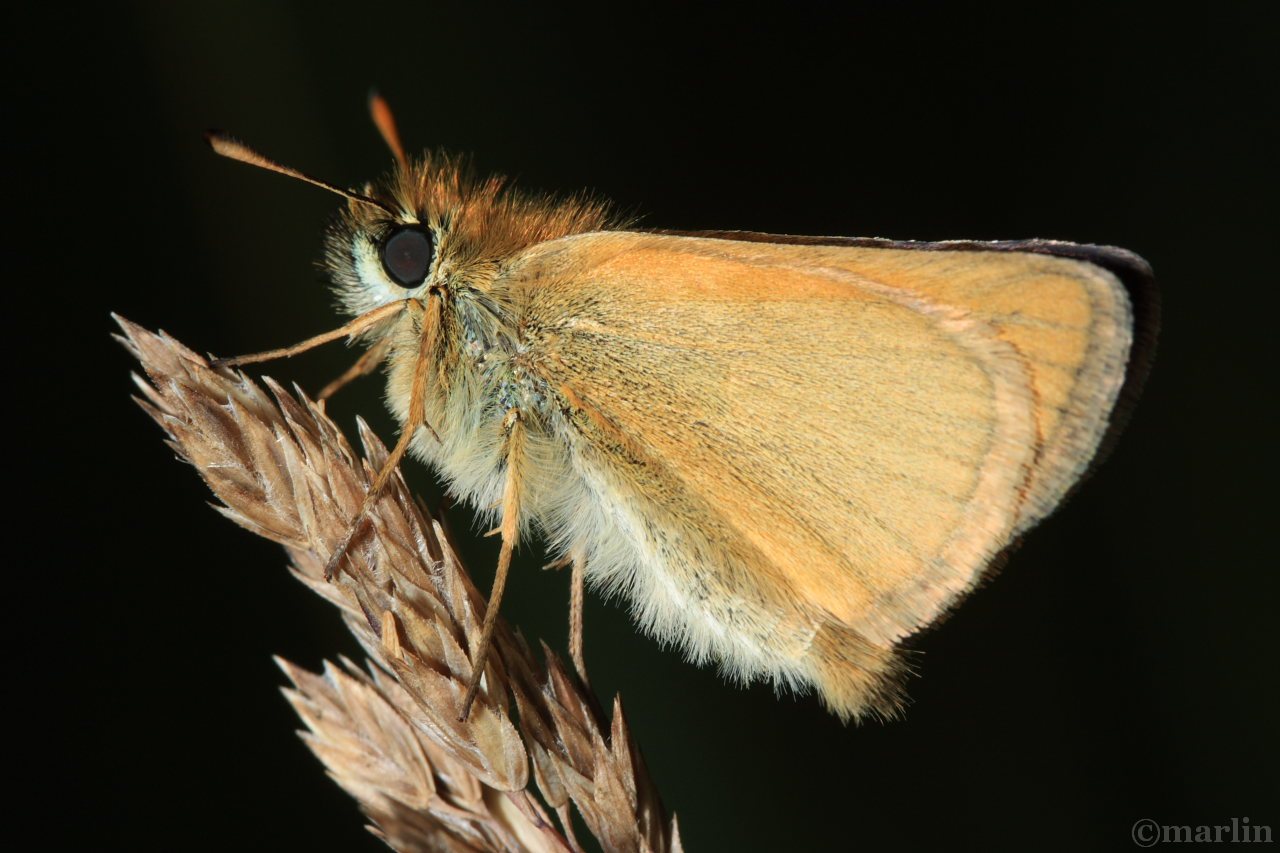Skipper Butterflies – Family Hesperiidae
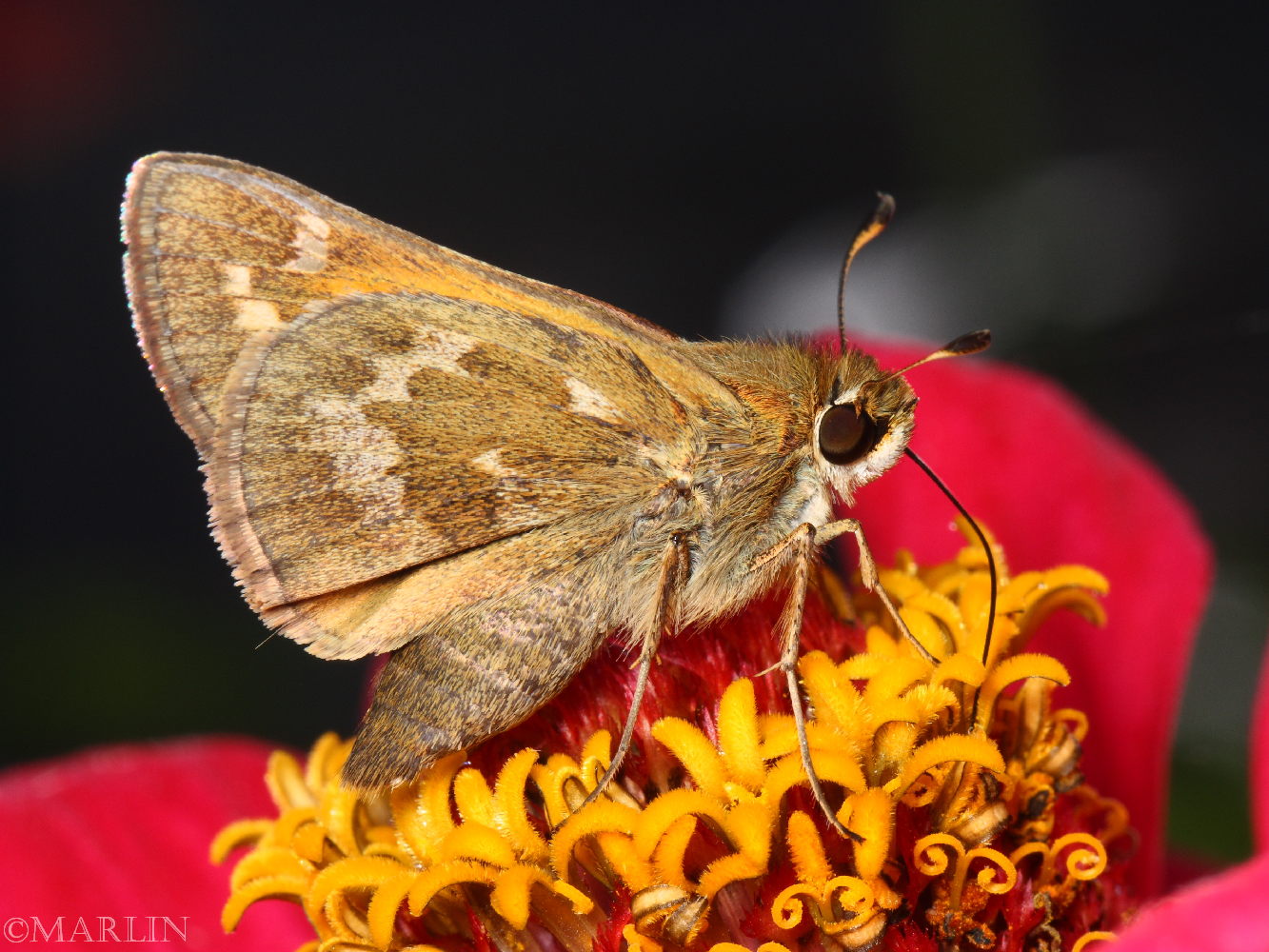 Atalopedes campestris – Sachem – Hodges#4049 Late-season (October 23rd) sachem is still robust and energetic in the sunshine of my zinnia garden. Long after the big boy butterflies of summer have vamoosed (save a few sulphurs and cabbage whites) these little guys are still having fun!
Atalopedes campestris – Sachem – Hodges#4049 Late-season (October 23rd) sachem is still robust and energetic in the sunshine of my zinnia garden. Long after the big boy butterflies of summer have vamoosed (save a few sulphurs and cabbage whites) these little guys are still having fun!
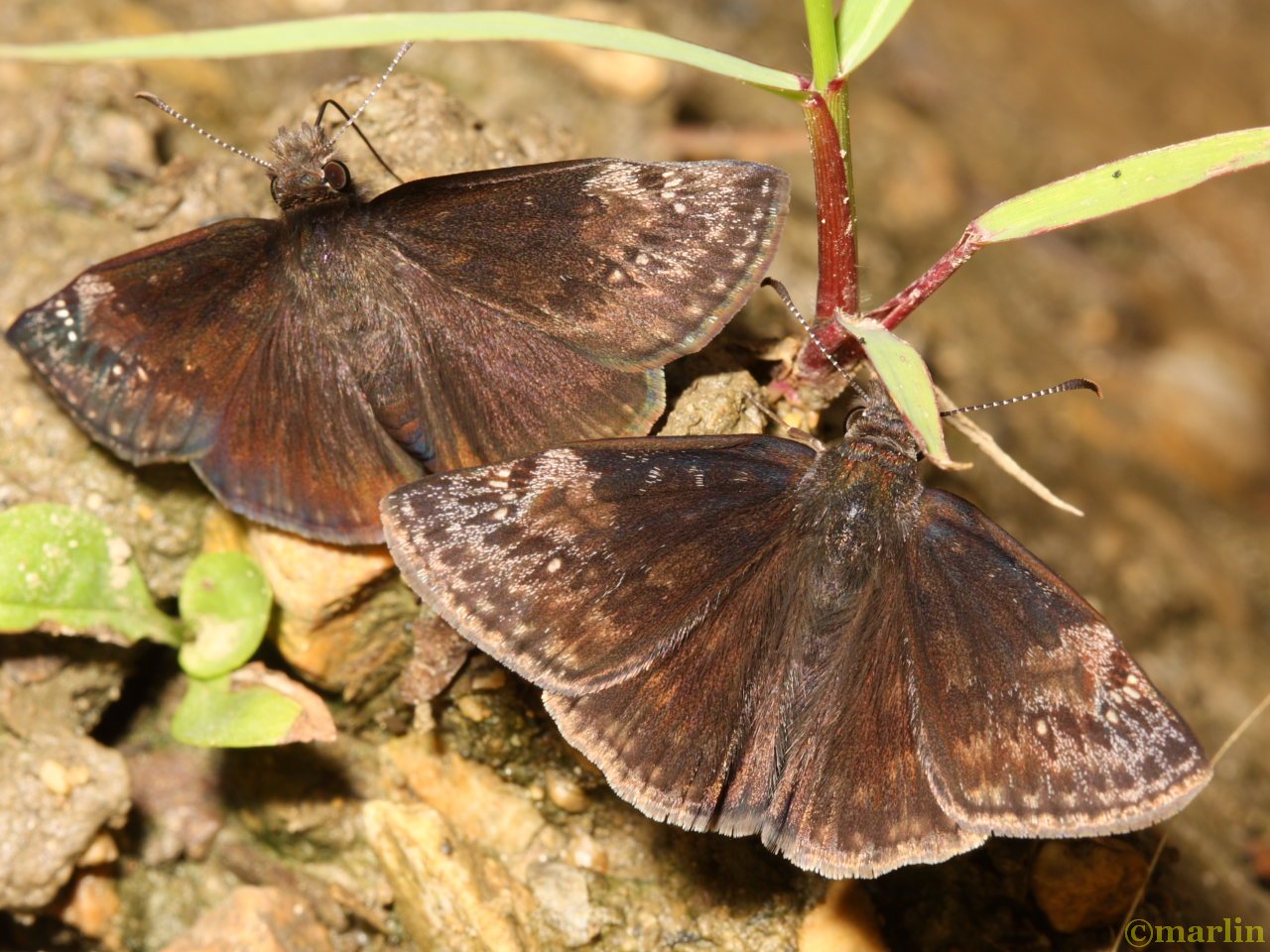 Two wild indigo duskywing skippers taking water from moist soil. Female on left, male on right. All adult skippers have six well developed legs and four wings. Their flight is often speedy and erratic and they appear highly playful. They are quite assertive and pushy for their size, which is generally less than half that of their larger, more familiar relatives. A large contingent in any flower garden is a sure sign you’re doing something right.
Two wild indigo duskywing skippers taking water from moist soil. Female on left, male on right. All adult skippers have six well developed legs and four wings. Their flight is often speedy and erratic and they appear highly playful. They are quite assertive and pushy for their size, which is generally less than half that of their larger, more familiar relatives. A large contingent in any flower garden is a sure sign you’re doing something right.
Before I started photographing insects, I was completely unaware of these charming little butterflies. I have since come to appreciate their antics and admire their flying abilities. The silver-spotted is the largest skipper (ranging up to about 20mm body size) and most numerous of all butterflies in my flower gardens. They love zinnias, and are always skirmishing amongst themselves as well as “chasing away” much larger butterflies such as monarchs or tiger swallowtails. They even nudge aside bumblebees and intimidate ruby-throated hummingbirds! I love nothing better than watching skippers twirl and dance with each other while ascending up, and out of sight into the sky. What better way to spend a late-summer afternoon?
The silver-spotted is the largest skipper (ranging up to about 20mm body size) and most numerous of all butterflies in my flower gardens. They love zinnias, and are always skirmishing amongst themselves as well as “chasing away” much larger butterflies such as monarchs or tiger swallowtails. They even nudge aside bumblebees and intimidate ruby-throated hummingbirds! I love nothing better than watching skippers twirl and dance with each other while ascending up, and out of sight into the sky. What better way to spend a late-summer afternoon?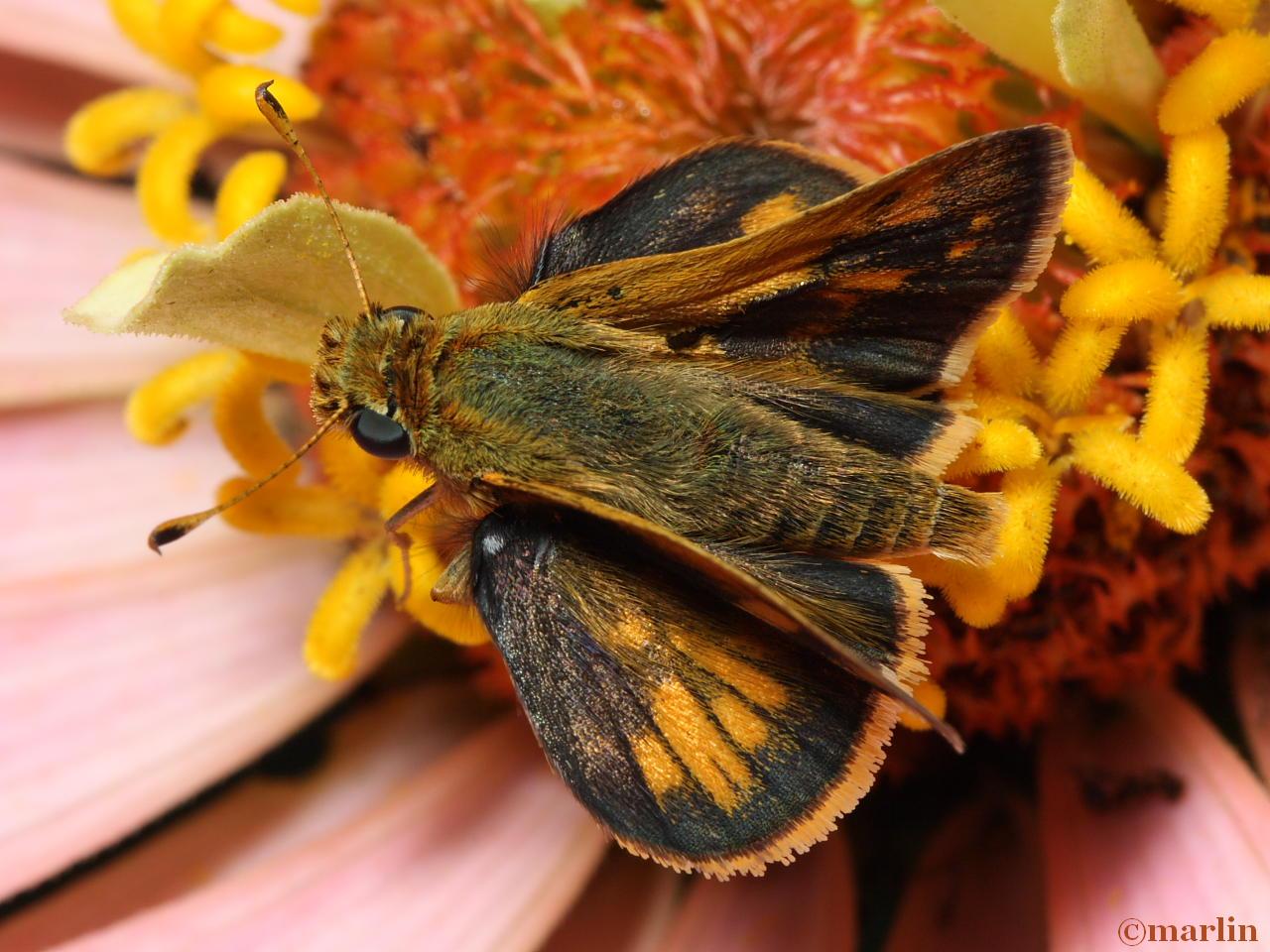 Peck’s skipper is on the small side, but their underwing markings with bright splashes of orange make them some of the most easily identified. They are extremely fast, erratic flyers, and have no trouble mixing it up with the big boys.
Peck’s skipper is on the small side, but their underwing markings with bright splashes of orange make them some of the most easily identified. They are extremely fast, erratic flyers, and have no trouble mixing it up with the big boys.
The least skipper is a small butterfly with a disarmingly weak, fluttering flight. Look for them amidst tall grass, especially near moving water. They can be extremely numerous under the right conditions, and are some of the earliest springtime flyers. They love dandelions.
This is the only specimen of the checkered skipper I’ve ever seen. Please excuse the hurried shot; I wish I’d had more time with this unusually-colored butterfly. That blue colored hair might seem at home in a mosh pit.
The Delaware skipper uses many varieties of host plants for laying eggs. Identification: Upper side of forewing is dark on the basal half and lighter on the outer half, with a distinct orange-brown patch at the end of the cell. Male has a costal fold containing yellow scent scales; female has a patch of scent scales on the 7th abdominal segment.
Life history: Males perch in open areas on low shrubs to wait for females. Eggs are deposited singly on the host plant. Fully-grown caterpillars from the second brood hibernate. Flight: Two broods from late April to early June and from July to August. Wing span: 1 3/8 – 1 5/8 inches (3/5 – 4.1 cm).
Caterpillar hosts: Usually wild indigo (Baptisia tinctoria), but also others including wild blue indigo (B. australis), lupine (Lupinus perennis), false lupine (Thermopsis villosa), and crown vetch (Coronilla varia).
It’s the male fiery skipper that puts the fire in the skipper. They are brilliantly orange colored, which makes them highly visible as they dart around with their swift and erratic flight. And it’s the female’s comparatively drab paint job that provides her with excellent camouflage, especially in flight.
It’s extremely difficult to follow her swooping and continual abrupt changes of direction. Luckily, if you have a sunny field with blooming clover and short foliage, they can be numerous enough where finding a new subject is quick and easy.
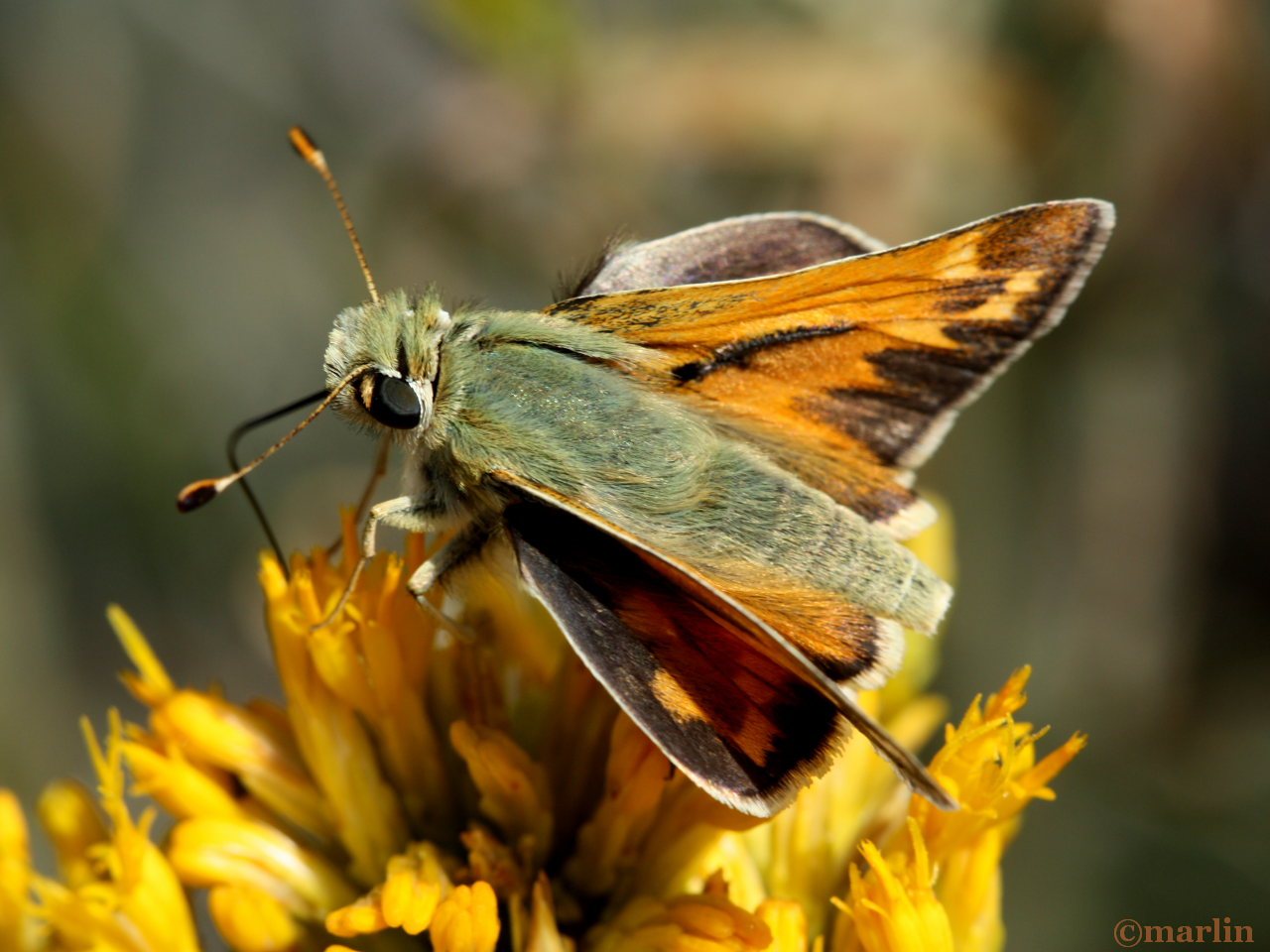
Juba Skipper
Skipper Butterflies share some characteristics of moths; stocky with a large head, widely spaced, hooked antennae, a chunky body and short wings.
Skipper wings are usually well-rounded with more or less sharply-tipped forewings. There are some with prominent hindwing tails, and others have more angled wings; the skippers’ basic wing shape varies not much by comparison to Papilionoidea however. Most have a fairly drab coloration of browns and greys; some are more boldly black-and-white. Yellow, red and blue hues are less often found, but some largely brown species are quite rich-colored too. Green colors and metallic iridescence are generally absent. Sexual dichromatism is present in some; males may have a blackish streak or patch of scent scales on their forewings.
Many species of skippers look frustratingly alike. For example, some species in the genera Amblyscirtes, Erynnis (duskywings) and Hesperia (branded skippers) cannot currently be distinguished in the field even by experts. The only reliable method of telling them apart involves dissection and microscopic examination of the genitalia, which have characteristic structures that prevent mating except between conspecifics. [2]
Skipper butterflies can be divided into five subfamilies:
-
Pyrginae, or spread-wing skippers. These butterflies bask with their wings spread open flat, although there are a few that sit with the wings folded over their back. The cloudy wings sit with their wings partly open. Most spreadwings are patterned in gray, black and white. Caterpillars feed on many different types of plants, especially legumes.
-
Grass Skippers, subfamily Hesperiinae constitute the largest grouping, and perhaps the most challenging for those seeking to identify specimens. They are smaller than the spread-wing skippers, and many are patterned with yellow, orange and black. Grass skipper larvae feed mostly on grass.
-
Giant Skippers, subfamily Megathyminae includes the largest skippers. These are rare butterflies, even where there host plants, the Agaves and Yuccas are common. They are very fast and powerful flyers.
-
Skipperlings, subfamily Heteropterinae includes only a handful of small species living in the north and west. They lack the narrow extension (apiculus) of the antenna club. Many skipperlings sit with the wings open flat.
-
Firetips, subfamily Pyrrhopyginae. Only one species of this mainly subtropical group inhabits North America: the Atraxes skipper.
References
1. Opler, Paul A., Harry Pavulaan, Ray E. Stanford, Michael Pogue, Butterflies and Moths of North America. Bozeman, MT
2. Wikipedia Skipper Butterfly
Moths Index | Moths
Butterflies Main | Butterflies Index

